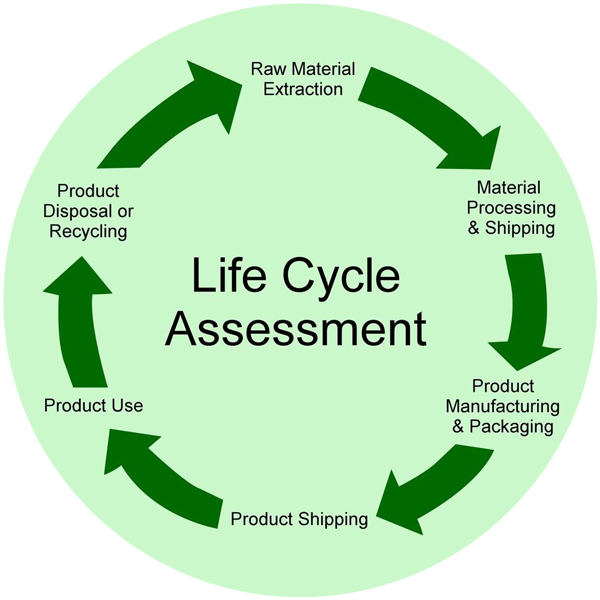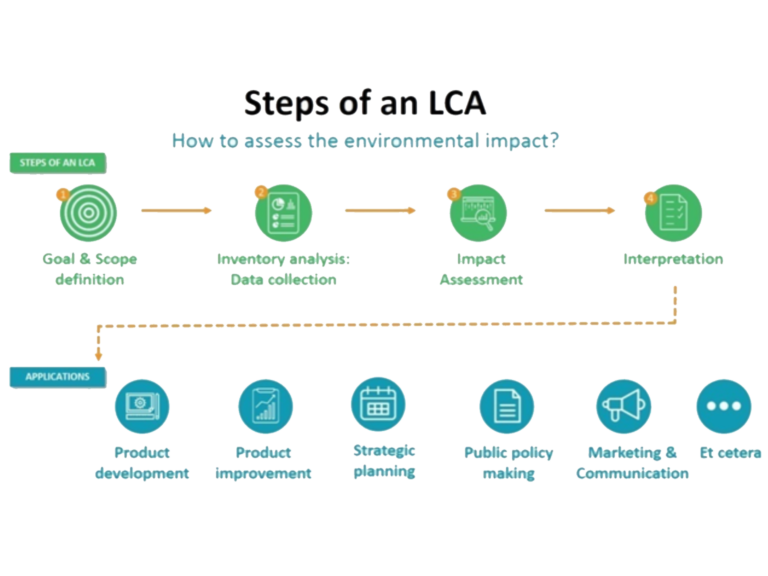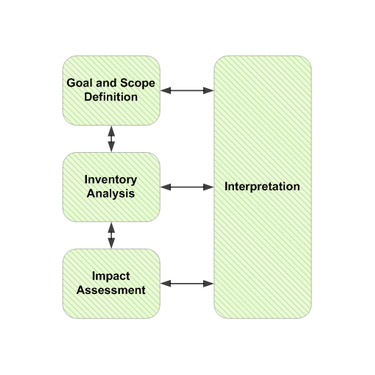Sustainability Management
Life Cycle Assessment (LCA) & Environmental Product Declaration (EPD)

Example of Life Cycle Assessment Diagram
A standardized management tool (ISO 14040 - 44) for appraising and quantifying the total environmental impact of products or activities over their entire life cycle of particular materials, processes, products and technologies , services or activities.
For instance in the case of manufactured product, environmental impacts are assessed from raw material extraction and processing (cradle), through the product’s manufacture, distribution and use, to the recycling or final disposal of the materials composing it (grave).
An LCA study involves a thorough inventory of the energy and materials that are required across the industry value chain of the product, process or service, and calculated the corresponding emissions to the environment.
LCA thus assesses cumulative potential environmental impacts.
The aim is to document the potential environmental impacts and improve the overall environmental profile of the product.
Therefore the goal of LCA is to compare the full range of environmental effects assignable to products and services by quantifying all inputs and outputs of material flows affecting the environment.
This information is used to improve processes, support policy and provide a sound basis for informed decisions.
Main Phases of LCA
LCA is carried out in 4 different stages of parameters

Goal and Scope of the study
Life Cycle Inventory (LCI)

Life Cycle Impact Assessment (LCIA)
Interpretation
Most importants variants of LCA
*Cradle-to-grave : full Life Cycle Assessment from resource extraction (« cradle » ) to use phase and disposal phase ( « grave » ).
*Cradle-to-gate : an assessment of partial product life cycle from resource ( cradle ) to factory gate (before transport to the customer).
The use phase and disposal phase are omitted in this case.
*Cradle-to-cradle or closed loop production: a specific kind of cradle to grave assessment where the end of life disposal step for the product is recycling process.
Environmental Product Declaration (EPD)
An EPD – environmental product declaration – is a document which presents the environmental performance of a product. EPD’s are a formal and internationally recognized way to present these impacts. Typically, Life Cycle Assessment is the method to calculate the impact data that supports the EPD.
The completed EPD therefore serves as an environmental label or declaration.
The LCA Data Calculations behind an EPD use Life Cycle Inventory analysis.
These calculations and processes follow the ISO 14040 standard. The ISO 14040 is the standard developed to describe the principles and framework of conducting LCA.
There are also specific standards for developing the declarations and labels of LCA are used to support. In the context of EPD’s, this is commonly the ISO 14025 environmental labels and declarations – Type III environmental declarations.
EPD’s have the following goals4>
Goal 1
To objectively and transparently communicate information of the environmental aspects of products according to the life cycle stages of a product.
Goal 2
Allow purchasers and or users to make a fair comparison of the environmental performance of products within the life cycle perspective.
Goal 3
They encourage improvement of environmental performance.
EPD’s are subject to different validity periods, though most are valid for 5 years.
EPD’s are mainly relevant in business-to-business communication, business-to-customer communication , eco-design and green public procurement.
ISO Regulations
ISO 14040
Environmental management - Life Cycle Assessment - Principles and Framework
ISO 14025
Environmental labels and declarations - Type Environmental Declarations
ISO 14044
Environmental management - Life Cycle Assessment - Requirements and Guidelines
ISO 14067
Carbon Footprint of Products (under development)
ISO 14021
Self - declared environmental claims - Type II Environmental Labelling


 +32 497 50 21 44
+32 497 50 21 44 +352 661 50 21 44
+352 661 50 21 44